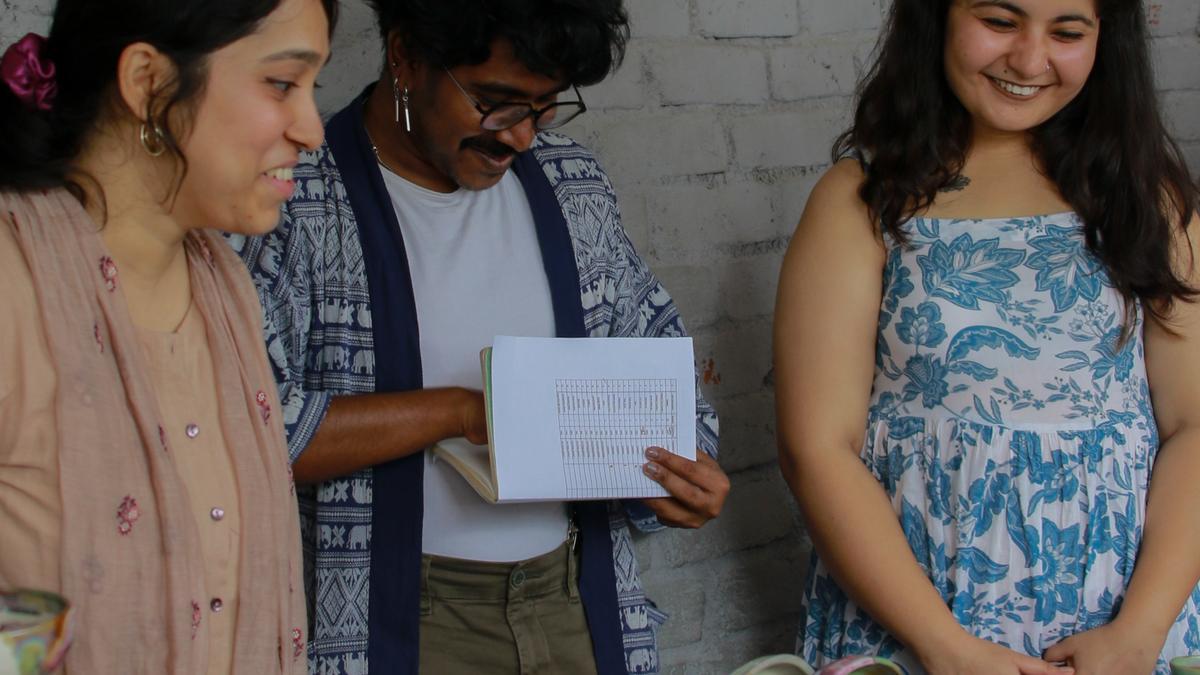
Early in “Minmini,” set against the backdrop of a chilly evening in Ooty’s esteemed school, a candle’s flame extinguishes, only to be rekindled by a fellow student. “When one candle lights up another, there’s no loss,” someone insightfully remarks. This line encapsulates the essence of this 143-minute coming-of-age drama, signaling a journey steeped in symbolism and poignancy.
The film opens with a series of sequences in the picturesque school in Ooty. The protagonist, Pari (Gaurav Kaalai), stands out as the epitome of popularity, being the school’s football star with an impressive collection of trophies that the school shelves can barely contain. The dynamics shift with the arrival of Sabari, a new student with contrasting interests—chess over football, colors over cups, introversion over exuberance.
The initial scenes brew a tension between Pari and Sabari. Their palpable discord sets the stage for an unforeseen accident that acts as the pivotal moment for both the characters and the narrative itself. The drama evolves post-accident, transforming “Minmini” into a tale of self-discovery.
Without much ado, the second half catapults the story to the majestic Himalayas. Away from the sheltered life of their school, two of the students—Praveenah (Esther Anil) and Sabari (Praveen Kishore)—embark on a journey that isn’t just about exploring the vast expanse but also delving deep into their innermost selves.
The transition is intriguing as the film now unfolds amidst the serene and romanticized Himalayan ranges. Director Halitha Shameem captures the breathtaking vistas while injecting the sequences with an abundance of conversations reflecting on life, aspirations, and the pursuit of happiness. While the dialogues add depth, there’s an indubitable feeling that some of these lengthy stretches of introspection border on overindulgence.
However, this indulgence in the picturesque beauty of the Himalayas and the philosophical dialogues therein also casts a shadow on the narrative. The film often feels like a visual delight with layers that do not penetrate deep enough. Scenes like spotting an arts festival sign and immediately deciding to head there, or riding a camel, or even the ritualistic drinking of butter tea, seem to merely serve as ornamental attractions that resemble an advertisement for Himalayan tourism rather than adding substantive depth to the characters’ journey.
.
The characters’ voiceovers, primarily narrations on life and existence, don’t alleviate this feeling. On the flip side, Manoj Paramahamsa’s cinematography breathes life into the film, capturing the majestic beauty of the terrain which is a visual treat. Khatija Rahman’s music also lends a significant hand, especially with the haunting melodies that underscore the Himalayan segments. However, one could argue that the music during the college sequences in the first half is overly dramatic and somewhat out of sync with the film’s overall tone.
The climax and subsequent sequences are gripping, offering a certain amount of closure and reflection. However, Halitha Shameem’s tendency towards literalism sometimes weighs heavily on the narrative. For instance, a young Sabari reading a book about friendship or having the lead characters converse on profound topics like the afterlife under a starlit sky feels a tad on the nose. The accident sequence, pivotal as it is, could have been executed with more intensity to convey its seriousness adequately.
A significant talking point about “Minmini” before its release was the director’s decision to film over eight years to naturally capture the growth of the actors. This ambitious endeavor does achieve its goal to some extent, particularly with Sabari’s character arc. However, the stark contrast between the two halves of the film leaves the narrative feeling somewhat disjointed and unharmonised.
From a broader perspective, “Minmini” stands out in recent Tamil cinema, a vibrant contrast against the predominantly dark and violent tones that often define the genre. The film’s visual brilliance and refreshing treatment are commendable; however, it unfortunately falls short in terms of narrative depth.
Throughout the film, one craves more potent drama and confrontation. Much like the journey that the characters undertake, the film itself seems to meander without a definitive destination. It leaves the audience with a feeling akin to gazing at a beautiful photograph of the Himalayas—a sight to behold and sigh at, but evoking a yearning for something more profound and transformative.
“Minmini” is currently screening in theatres, offering a visual escape but perhaps not the depth one might have anticipated.










